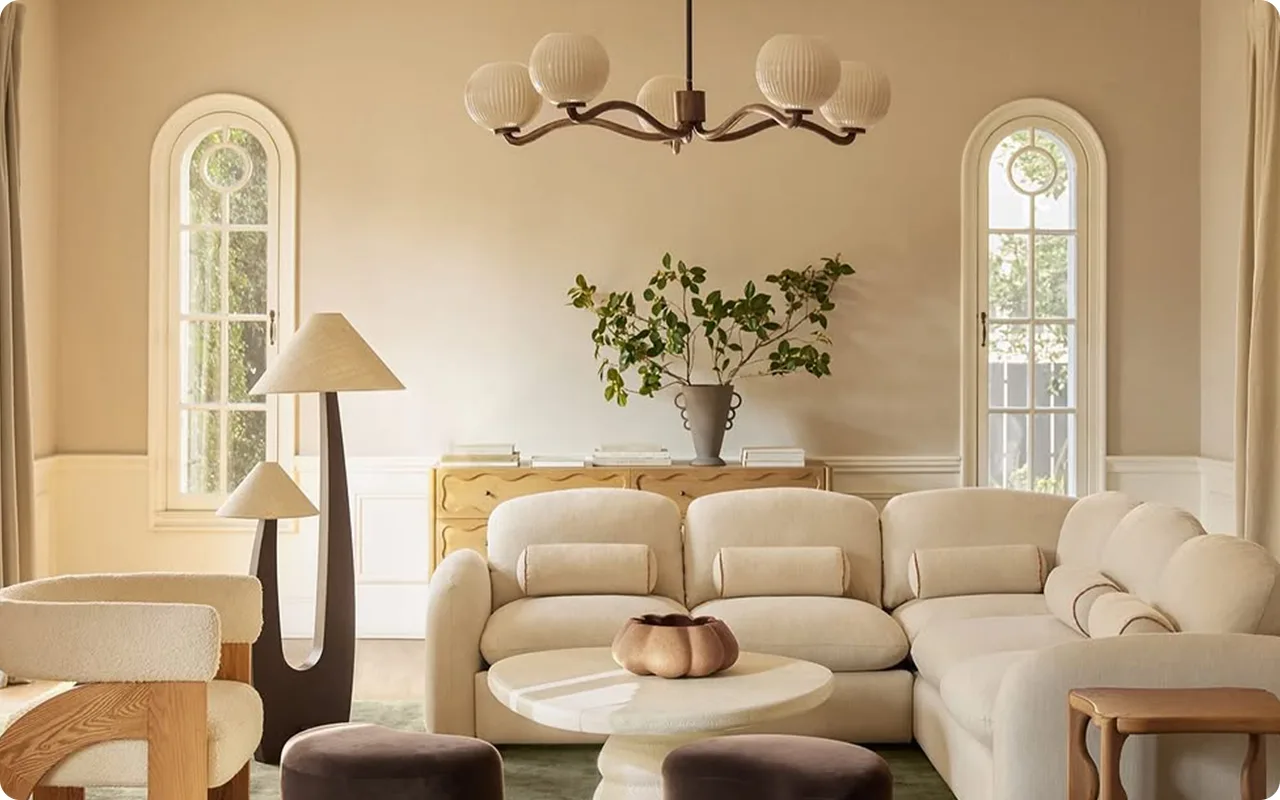I’ll be honest—warm beige doesn’t always get the credit it deserves.
While other trendy paint colors come and go, warm beige quietly holds its ground, adding that soft, inviting warmth that makes a space feel lived-in and comfortable.
It’s one of those colors that works in almost any room, and when you find the right shade, it completely transforms a space without shouting for attention.
Over the years, I’ve tested a lot of beige paint colors—some too peachy, some too muddy, and a few that just didn’t sit right once they were on the wall.
But then there are those tried-and-true shades that nail that balance of warmth, softness, and versatility. That’s what this list is all about.
In this post, I’m sharing 15 of my favorite warm beige paint colors from both Sherwin Williams and Benjamin Moore.
I’ve included all the details I’d want if I were picking a color myself—undertones, LRV, where they work best, and what makes each one special.
So if you’re searching for that perfect cozy neutral, hopefully one of these will feel just right.
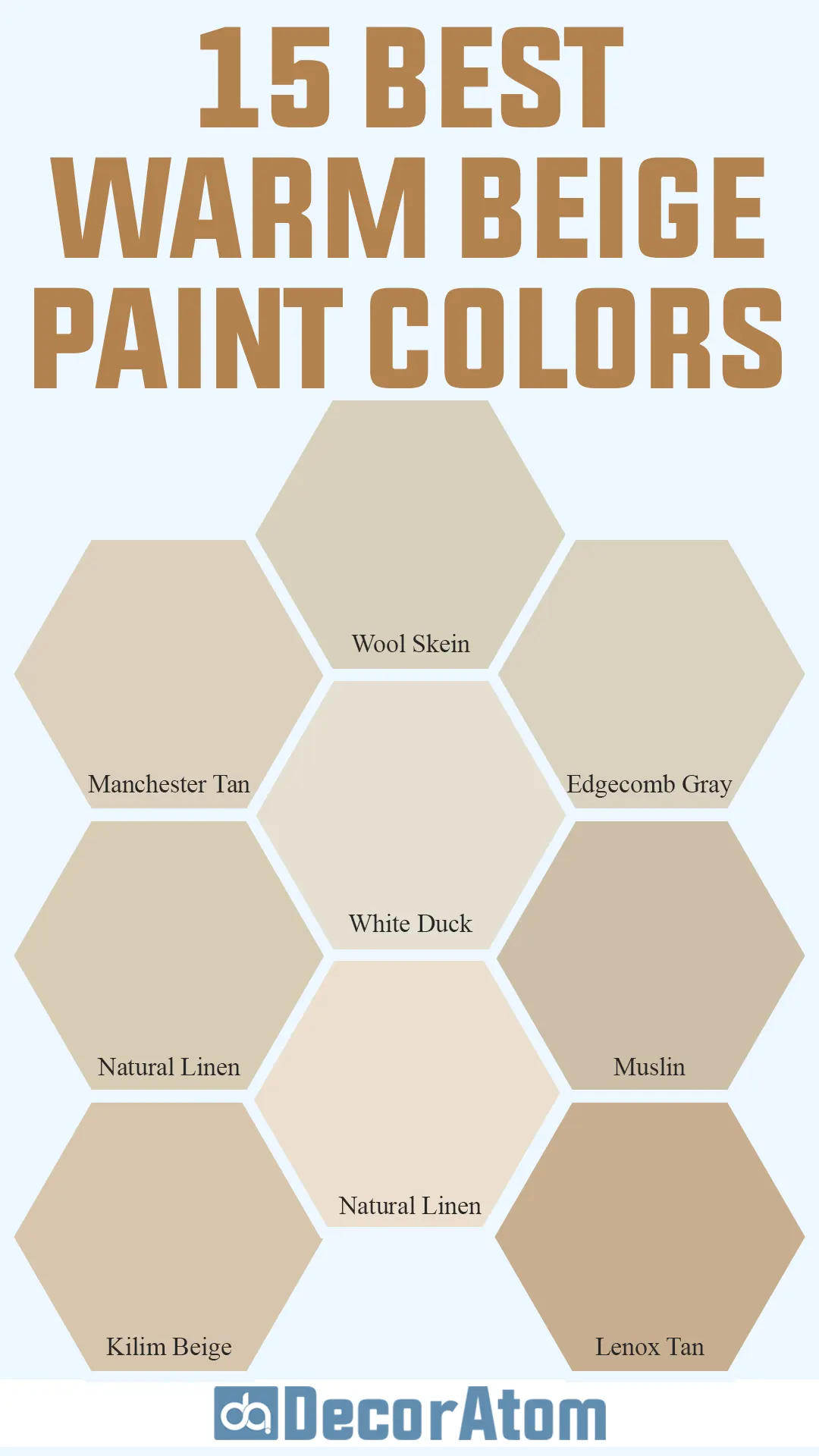
What are Warm Beige Paint Colors?
Warm beige paint colors are soft, inviting neutrals with golden, yellow, or red undertones that give them a cozy, sun-kissed glow.
Unlike cool beiges—which often carry hints of gray or taupe—warm beiges feel nurturing and grounded.
Think of sunlit sand, creamy lattes, or the natural tones of linen and raw wood.
These shades are known for making a space feel instantly comfortable and welcoming, which is why they’ve remained timeless, even as color trends shift.
Warm beige isn’t just one color—it’s a spectrum. Some lean slightly peachy or pink (like Sherwin Williams Kilim Beige), while others have a more golden or tan character (like Benjamin Moore Lenox Tan).
They’re subtle, flexible, and surprisingly modern when paired with the right accents.
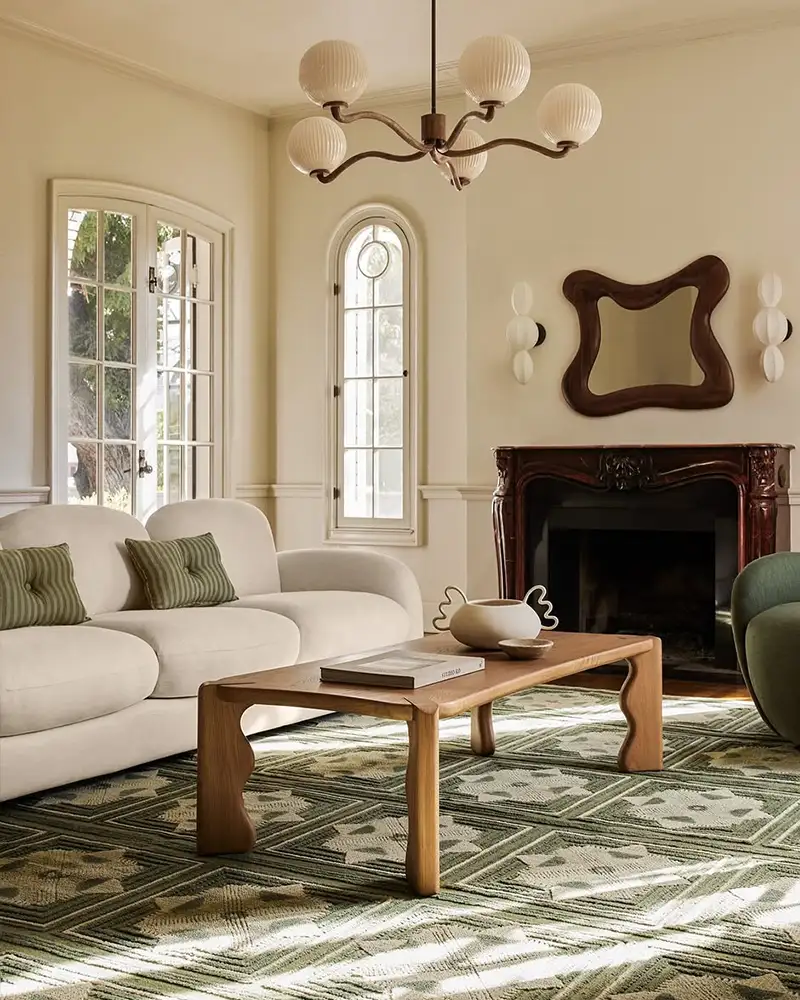
Where to Use Warm Beige Paint Colors
Warm beige is the kind of color that feels at home just about anywhere.
It’s the perfect backdrop for cozy living spaces, serene bedrooms, and even inviting entryways.
If you’re decorating a space where you want to feel grounded and calm, warm beige can be your best friend.
Here are some standout places to use warm beige:
- Living Rooms: It creates a welcoming, neutral foundation for both traditional and modern furniture styles. Whether you’re working with dark wood, soft leather, or woven textures, warm beige enhances that cozy, collected feel.
- Bedrooms: Warm beiges can bring a gentle, cocoon-like warmth to a bedroom without feeling heavy. Paired with layered bedding and soft lighting, it sets a peaceful, restful tone.
- Dining Rooms: If you love earthy elegance, try a deeper warm beige like Lenox Tan or Mortar. These shades add depth and sophistication, especially when combined with warm metals or natural wood tones.
- Open Concept Spaces: Warm beige is ideal for unifying open layouts. Colors like Accessible Beige or White Duck help maintain a light, airy flow while still adding a touch of personality.
- Bathrooms: A lighter warm beige like Benjamin Moore Muslin gives bathrooms a clean yet comforting feel, especially when combined with natural stone or brushed brass fixtures.
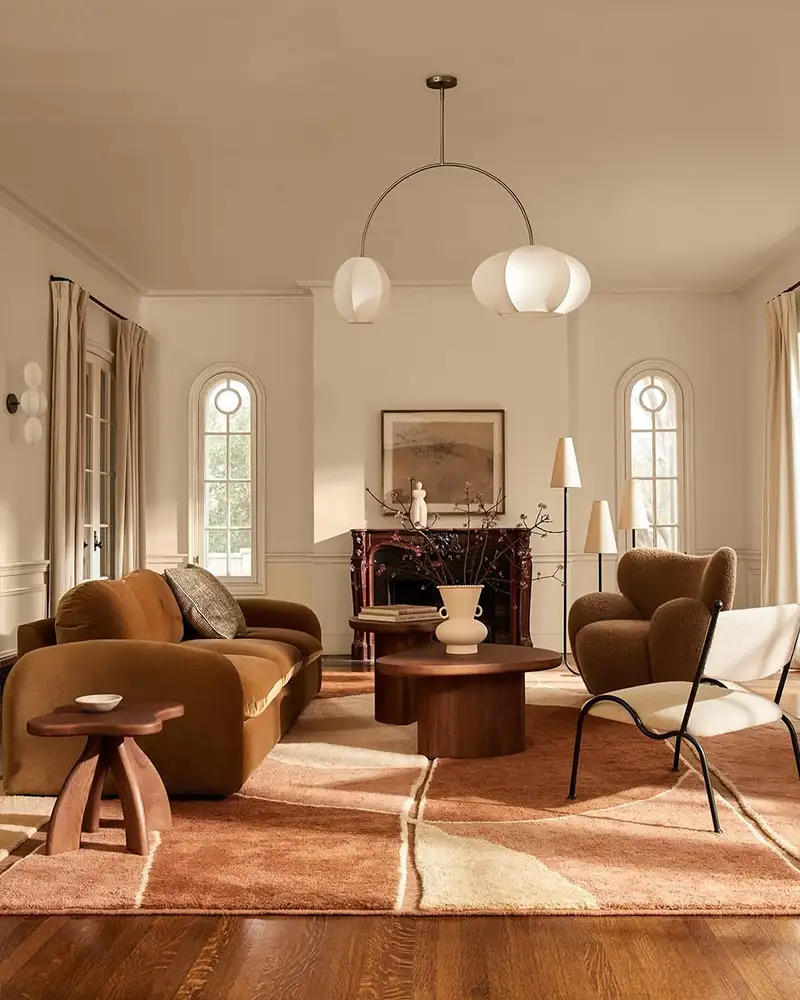
Colors to Pair with Warm Beige
Warm beige plays well with so many other colors—it’s incredibly versatile. The key is to lean into its warmth or balance it with cooler elements depending on the mood you want to create.
Here are some color combinations that pair beautifully with warm beige:
- Creamy Whites: Soft whites like Sherwin Williams Alabaster or Benjamin Moore Simply White add a light, seamless contrast that keeps things feeling bright and fresh.
- Warm Grays & Taupes: Pairing beige with warm greige tones creates a subtle, tonal look that’s perfect for layered, elegant spaces.
- Earthy Greens: Sage, olive, and mossy greens look stunning next to beige—it’s a palette that feels pulled straight from nature.
- Terracotta & Rust: These colors bring out the golden and peach undertones in warm beige and add a grounded, bohemian flair.
- Dusty Blues or Navy: If you want contrast, go for a muted blue or a bold navy. These cooler tones balance the warmth of beige and create a rich, timeless look.
- Charcoal or Black Accents: Adding black fixtures, lighting, or window frames can make a beige room feel more modern and structured without losing warmth.

Tips for Choosing the Best Warm Beige Paint Colors
Choosing the right warm beige isn’t just about picking a pretty swatch—it’s about finding the right tone for your space, lighting, and style. Here are some tried-and-true tips to help you land on the perfect shade:
1. Pay Attention to Undertones
Warm beige paint colors can carry pink, peach, yellow, or even red undertones. Test them in your space to see how those undertones play with your flooring, countertops, or furniture.
2. Test in Natural and Artificial Light
Paint colors shift dramatically depending on lighting. What looks like a creamy neutral in the store might turn peachy in your sunroom or muddy in a north-facing bedroom. Always test large swatches on your wall and observe them throughout the day.
3. Know Your Room’s Direction
South-facing rooms tend to bring out the warmth in paint colors, while north-facing rooms can cool them down. If your room gets cooler light, a warmer beige can help balance the tone.
4. Match with Fixed Elements
If you have fixed finishes like wood trim, tile, or cabinetry, bring those into the equation. A beige that clashes with your flooring will never look quite right—so choose something that complements what’s already there.
5. Compare Swatches Side-by-Side
It’s easier to see undertones when you look at a few options next to each other. Don’t rely on isolated samples—put a few warm beiges together and one will usually stand out as just right for your space.
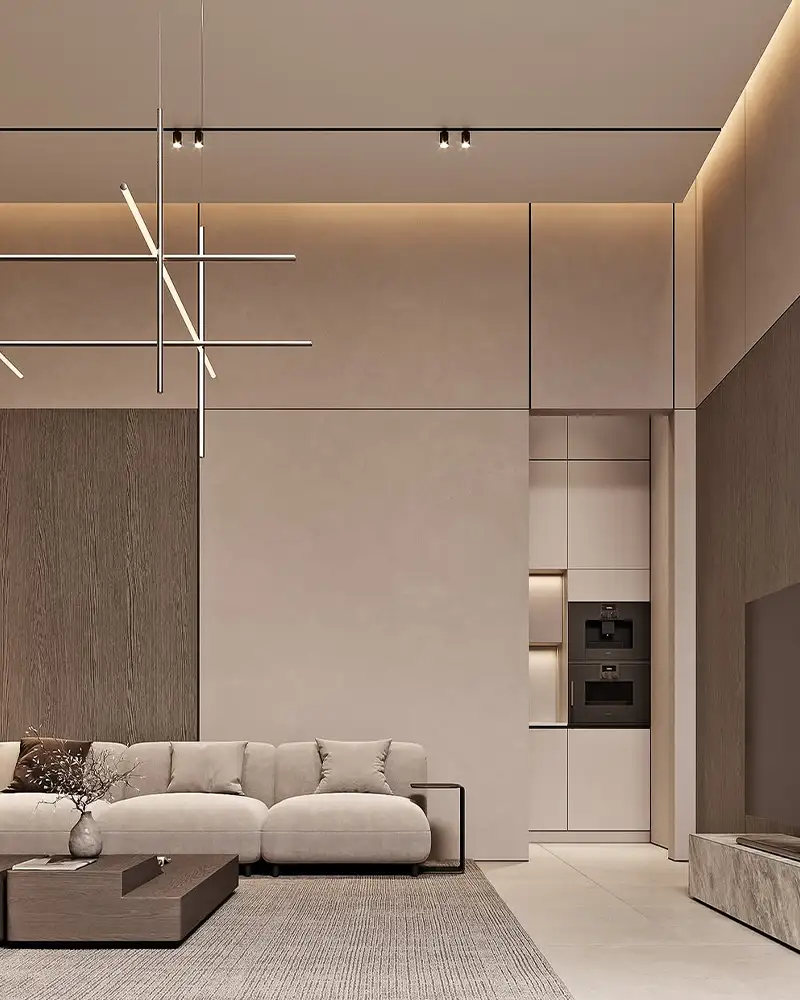
Top 15 Warm Beige Paint Colors
Here are my favorite Warm Beige paint colors to decorate with.
1. Benjamin Moore Manchester Tan

Manchester Tan is a timeless, soft beige with a quiet elegance that works beautifully in both traditional and transitional homes.
While it’s classified as a beige, it leans closer to a neutral tan with subtle green-gray undertones that help it avoid looking too yellow or too pink.
Its LRV of 64.41 gives it a mid-range reflectivity, so it feels light and easy without being stark.
In natural daylight, Manchester Tan looks refined and grounded—never too warm, never too cool.
It’s a fantastic whole-house color if you want something calming that plays well with wood tones, creamy whites, and earthy accents.
2. Sherwin Williams Wool Skein

Wool Skein is the kind of warm beige that quietly elevates a room.
With an LRV of 63, it brings a soft, muted warmth that’s easy to live with—especially if you’re leaning toward organic, earthy color palettes.
There’s a hint of gray in its undertone, which gives it a grounded, slightly taupe-like feel, but it still reads as a warm neutral on walls.
Wool Skein works beautifully in living rooms or hallways where you want softness and subtle sophistication without going full greige.
3. Sherwin Williams Accessible Beige

This one has become a cult favorite for a reason. Accessible Beige straddles the line between beige and greige in the best possible way.
It has a warm, almost taupe-like base with gentle gray undertones, and its LRV of 58 makes it slightly more saturated than others on this list.
It never feels too yellow or muddy, which is what makes it such a dependable choice for open-concept homes.
Accessible Beige adapts well to different lighting conditions—looking more beige in the warmth of sunlight and slightly cooler in shadowed areas—so it’s endlessly versatile.
4. Benjamin Moore Natural Linen
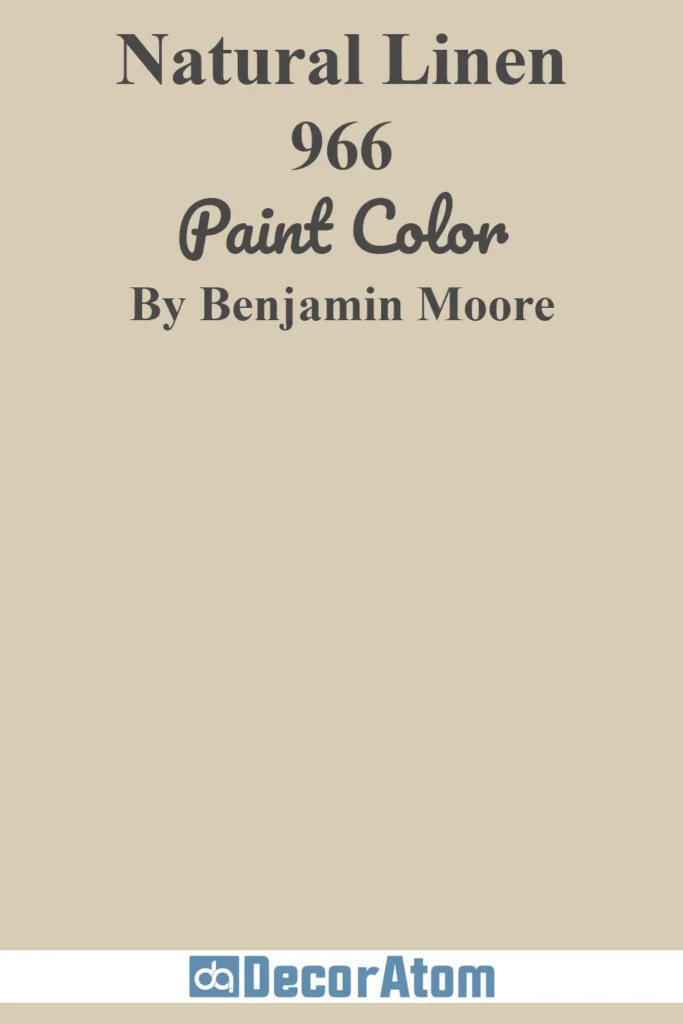
Natural Linen from Benjamin Moore is one of those barely-there beiges that whispers rather than shouts.
With an LRV of 66.54, it’s a lighter beige with soft pink undertones that give it a cozy warmth without making it overly rosy.
It works wonderfully in bedrooms, bathrooms, and spaces where you want a gentle glow.
In bright, natural light, the pink undertone is softened, creating a creamy backdrop.
But in low light, that touch of warmth brings a comforting vibe that feels serene and intimate.
5. Sherwin Williams Natural Linen

Despite sharing a name with its Benjamin Moore counterpart, Sherwin Williams’ Natural Linen is a slightly deeper and more grounded beige.
Its LRV is 66, placing it firmly in the light neutral zone, and it carries quiet pink and brown undertones that warm up a space without overpowering it.
I love it for bedrooms and dining rooms, where you want a touch of classic elegance that still feels modern.
It pairs beautifully with muted greens, warm whites, and even navy accents for a timeless look.
6. Sherwin Williams Malabar
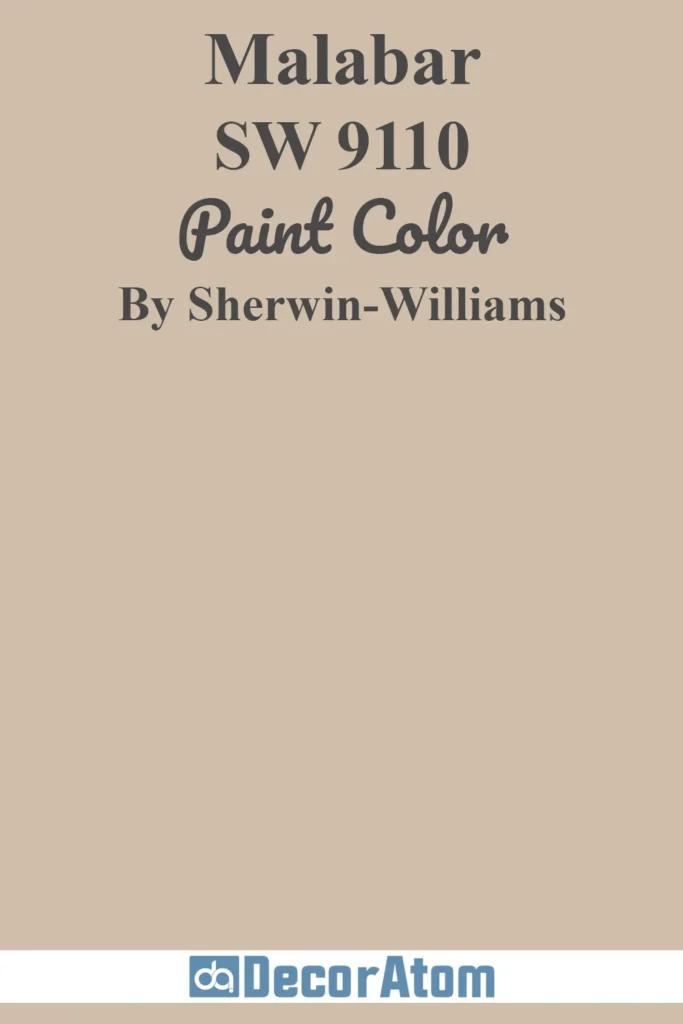
Malabar is a warm, sophisticated beige that leans into its rich undertones.
It has an LRV of 61, giving it a medium-light feel—definitely a touch deeper than some of the more airy beiges.
Its yellow and red undertones give it a sunbaked quality that feels earthy and refined at the same time.
It’s a fantastic choice if you want a beige that brings visual warmth and depth, especially in spaces with low natural light or north-facing rooms.
Paired with warm wood floors or natural stone, Malabar feels effortlessly organic.
7. Sherwin Williams White Duck
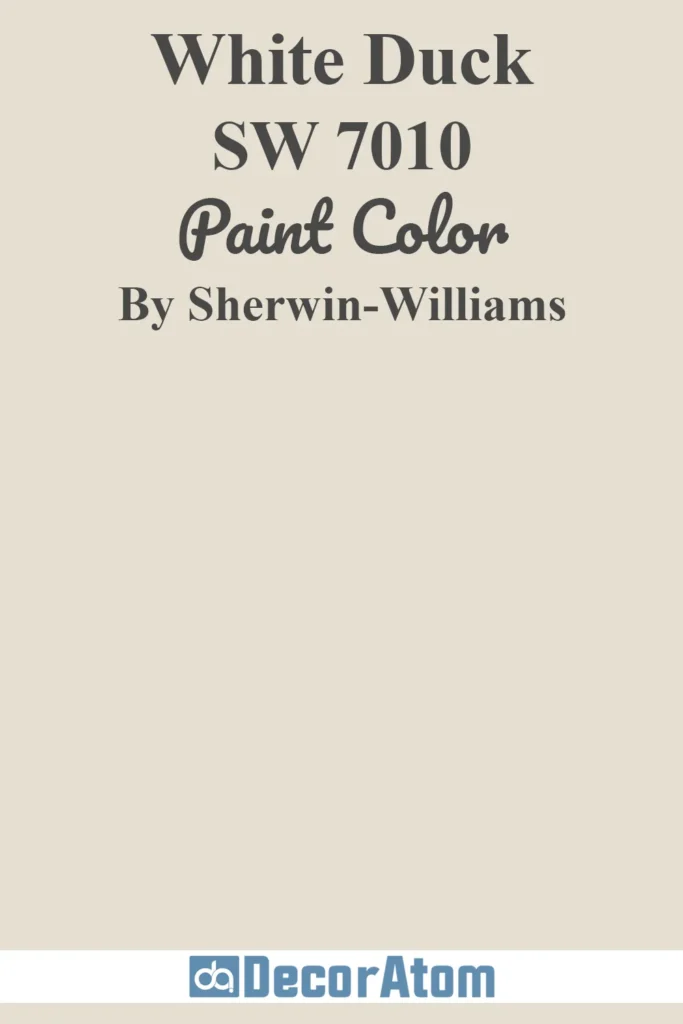
White Duck toes the line between warm beige and soft creamy white.
With an LRV of 74, it’s one of the lighter colors on this list, but its warm undertones keep it from ever feeling cold or stark.
It carries a muted beige warmth that’s grounded by a whisper of gray, which makes it a favorite for people who want something softer than white, but warmer than greige.
It’s particularly stunning on walls in farmhouse-style homes, where it brings an airy, sunlit quality without leaning yellow.
8. Benjamin Moore Muslin

Muslin is a warm and inviting beige with a subtle yellow-pink undertone that gives it a cheerful softness.
With an LRV of 66.54, it bounces light nicely without becoming overly bright.
It works beautifully in both modern and traditional spaces, and it’s especially good in homes that get cooler northern light.
Muslin adds that cozy warmth without going too creamy or orange.
I love how it looks paired with natural wood furniture and soft textiles—it feels like a hug in color form.
9. Sherwin Williams Mortar

Mortar is one of the more grounded and earthy shades on this list.
Its LRV is 49, so it’s noticeably deeper and more saturated than the lighter warm beiges here.
This gives it an enveloping, almost clay-like character that’s rich with warm yellow and tan undertones. Mortar feels cozy, natural, and rooted.
It works beautifully in living rooms or studies, especially when layered with organic materials like leather, linen, and wood.
If you’re craving a warm beige that doesn’t fade into the background, Mortar brings a bold, earthy charm.
10. Sherwin Williams Nomadic Desert

Nomadic Desert is a classic warm beige with a distinctly Southwestern soul.
It has an LRV of 50, so it falls into the medium-depth range—warm and inviting without being too dark.
Its undertones lean toward golden tan, with a touch of red that gives it a sun-drenched desert feel.
In spaces with lots of natural light, Nomadic Desert glows with earthy warmth.
In dimmer rooms, it takes on a more grounded, mocha-like hue.
It’s a lovely option for cozy family rooms, dens, or spaces where you want that lived-in, natural comfort.
11. Benjamin Moore Shaker Beige

Shaker Beige is what I’d call a dependable classic. It’s warm, inviting, and full-bodied without ever feeling too heavy.
With an LRV of 53.53, it sits in that ideal middle ground—offering depth and richness while still reflecting a decent amount of light.
The undertones are a soft mix of orange and pink, giving it that cozy, slightly rosy hue that’s so comforting in traditional homes.
In spaces with lots of natural light, Shaker Beige glows. In shadowed areas, the color deepens beautifully without turning muddy.
It’s one of those warm beiges that feels timeless and incredibly homey.
12. Sherwin Williams Kilim Beige

Kilim Beige is a long-time favorite for warm, approachable interiors.
It leans more toward the peachy side of beige, thanks to its gentle red undertones.
Its LRV of 57 gives it mid-level reflectivity, meaning it has presence on the wall but doesn’t darken a room.
What’s lovely about Kilim Beige is how easily it pairs with both warm and cool accents—olive green, terracotta, navy, even black.
In spaces with lots of sunlight, the peachiness becomes more noticeable, while in dimmer spaces it reads as a soft, warm neutral with a welcoming glow.
13. Sherwin Williams Softer Tan

Softer Tan does exactly what the name suggests—it softens a room.
With an LRV of 60, it’s light enough to keep things feeling open, but it has just enough warmth and body to anchor a space.
This one has golden beige undertones with a hint of muted yellow, which adds a cheerful vibe without becoming overly warm or buttery.
It’s perfect for bedrooms or living spaces where you want something light and neutral, but a little richer than a typical cream.
Softer Tan feels like a late afternoon sunbeam in paint form.
14. Benjamin Moore Lenox Tan
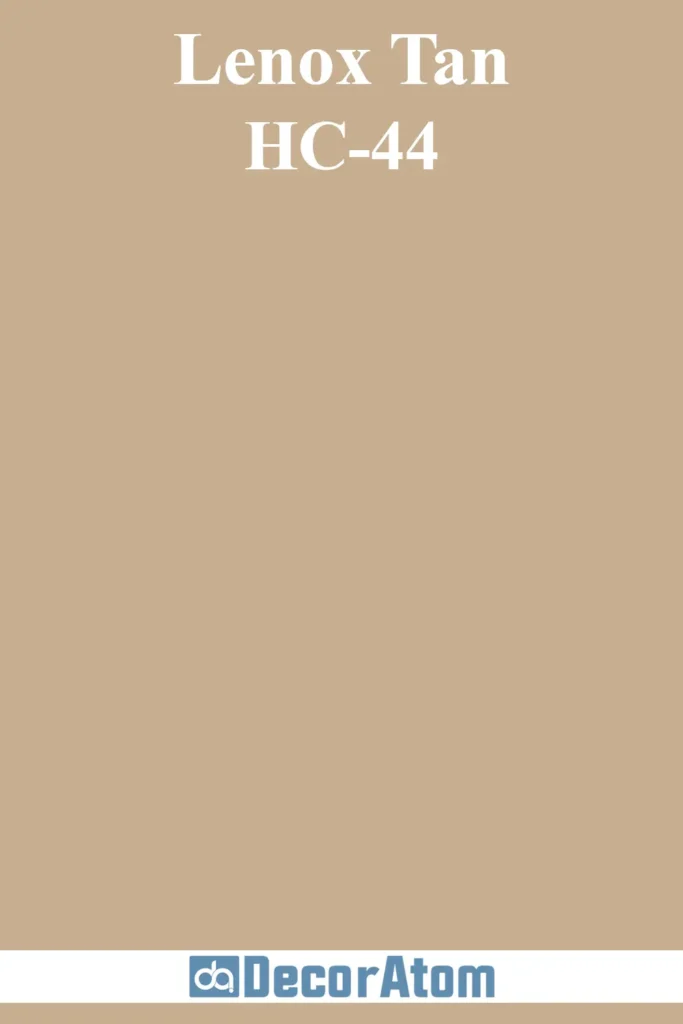
Lenox Tan is for those who want a beige with serious depth and character.
It’s definitely one of the deeper shades in this lineup, with an LRV of 43.14, which means it holds its own in a room and creates a cozy, enveloping feel.
The undertones lean strongly toward golden-brown, with just a whisper of orange.
It’s rich, earthy, and perfect for formal dining rooms, moody living rooms, or even historic homes where you want that warm, lived-in elegance.
Lenox Tan pairs especially well with crisp whites or deep accent colors like navy, espresso, or forest green.
15. Benjamin Moore Grant Beige
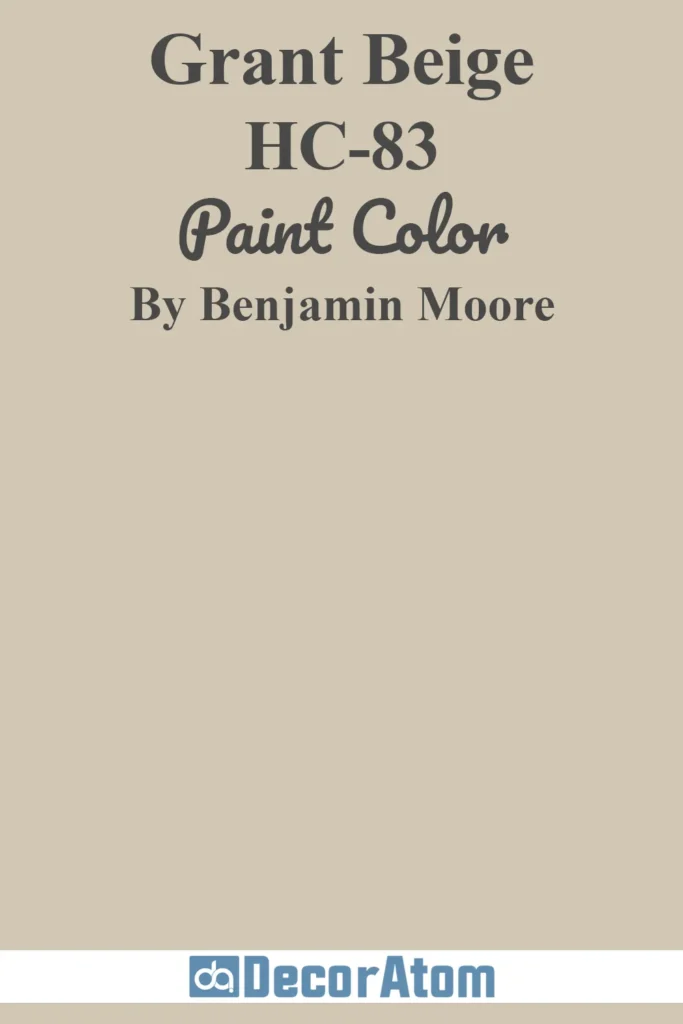
Grant Beige is one of those sneaky neutrals that can surprise you.
At first glance, it looks like a straightforward beige, but in different lighting, its cool undertones start to peek through—mostly subtle gray and a touch of green.
Its LRV of 56.65 keeps it right in that mid-tone sweet spot.
It’s warm enough to feel cozy but has just enough coolness to stay refined and fresh.
Grant Beige is incredibly versatile—it works in both warm and cool palettes, making it a go-to choice if you’re trying to balance wood tones with modern finishes or existing furniture.

